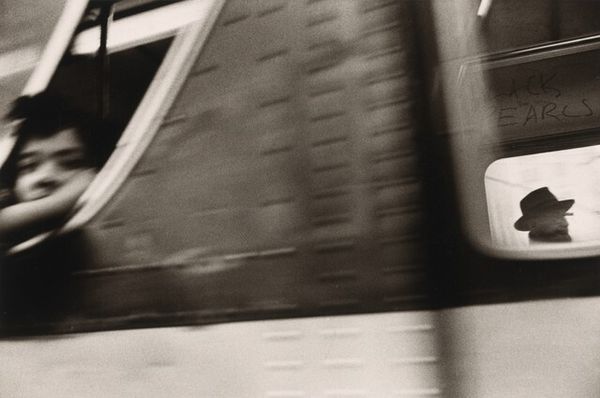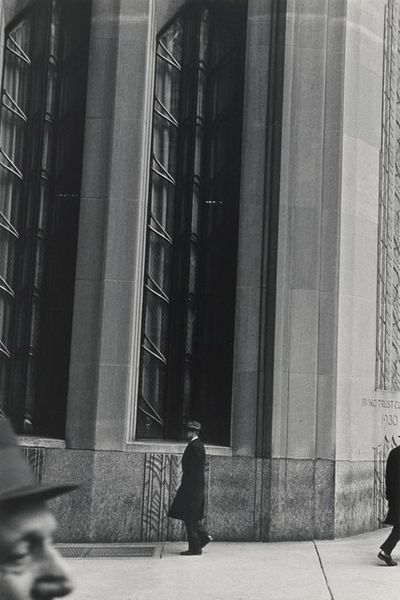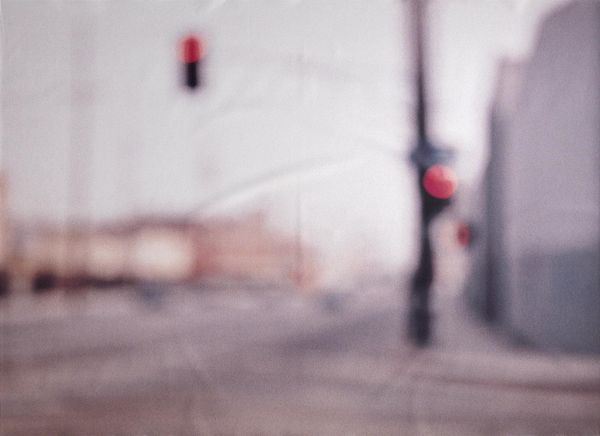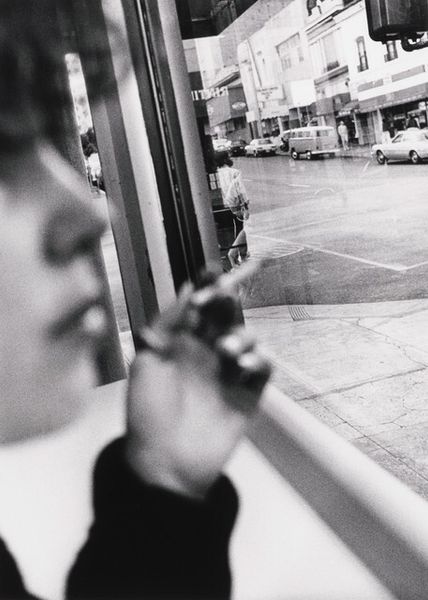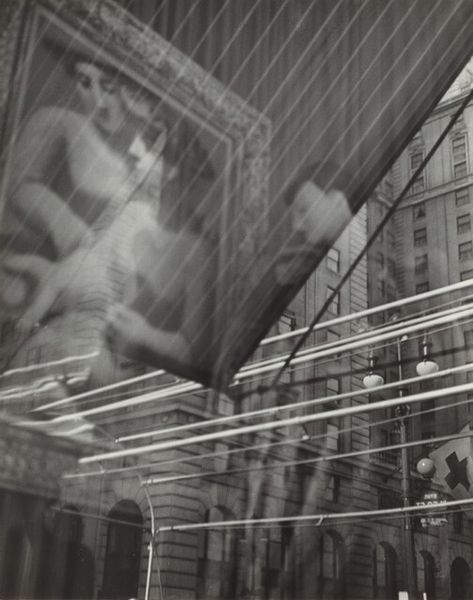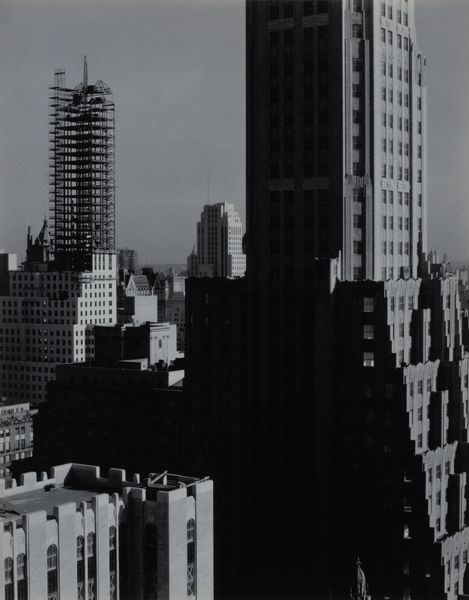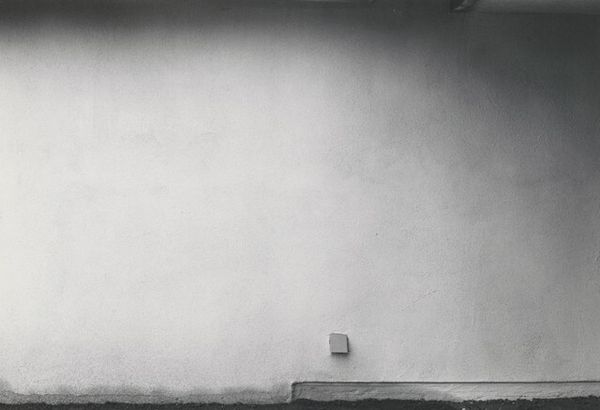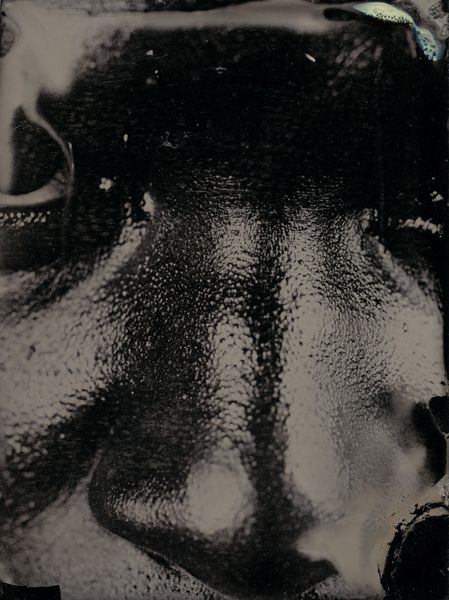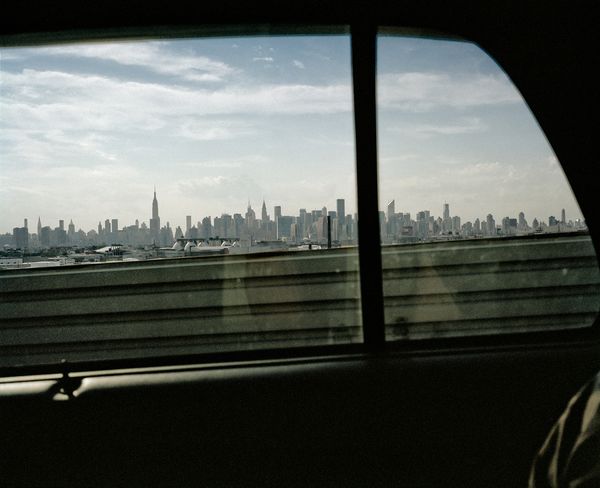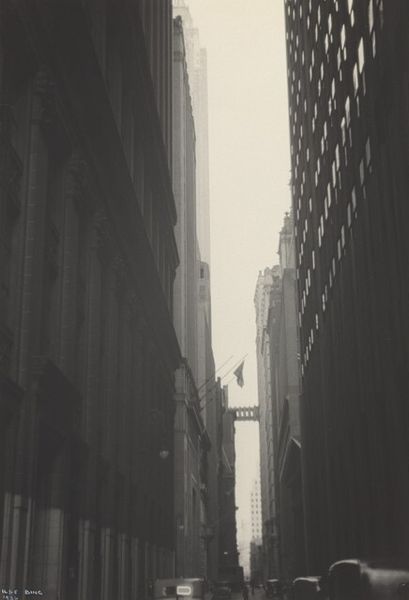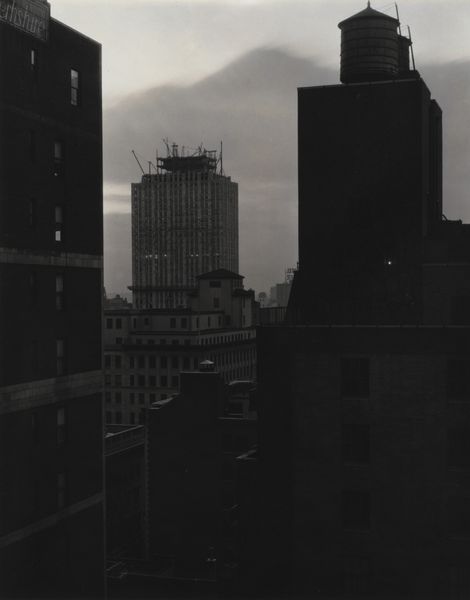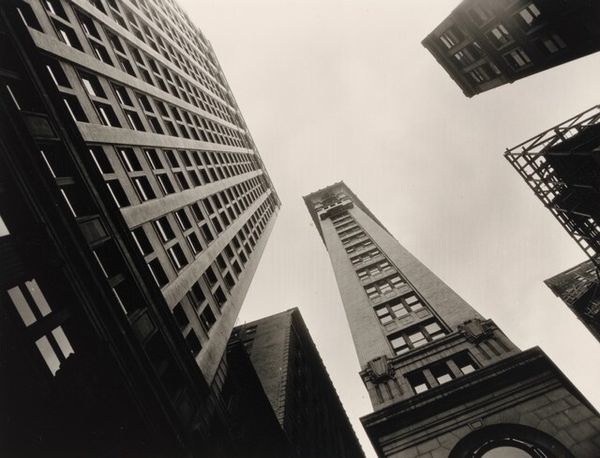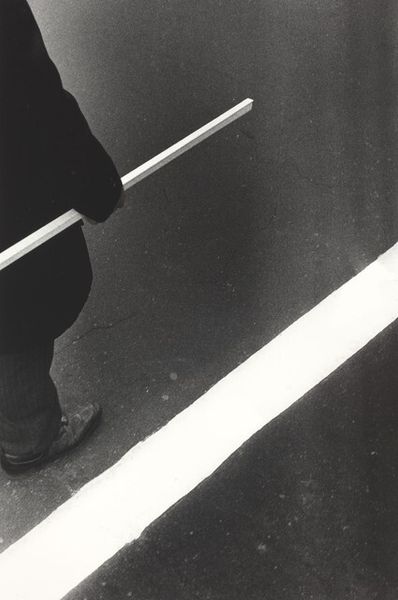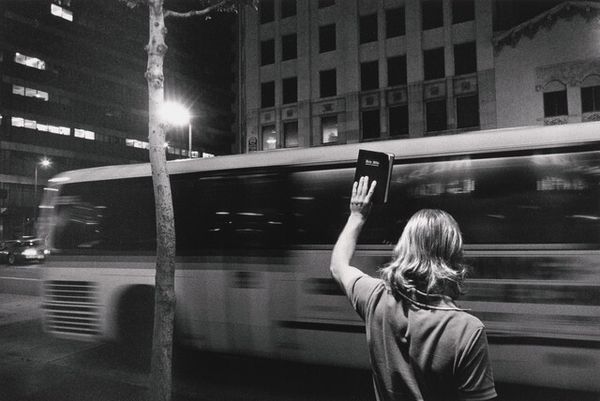
photography, gelatin-silver-print
#
portrait
#
black and white photography
#
street-photography
#
photography
#
black and white
#
gelatin-silver-print
#
monochrome photography
#
monochrome
#
modernism
Dimensions: image: 40.64 × 49.53 cm (16 × 19 1/2 in.) sheet: 58.42 × 67.31 cm (23 × 26 1/2 in.)
Copyright: National Gallery of Art: CC0 1.0
Editor: This photograph, "Jakarta, 2004, on Thamrin Road," by Leo Rubinfien, is a gelatin-silver print. It has an almost claustrophobic feel, doesn't it? You're so close to the subjects; the perspective is very intimate and candid. What's your take on it? Curator: As a materialist, what interests me is the process behind the image. Gelatin-silver printing involves coating paper with light-sensitive silver halides. This labour-intensive technique directly links the photographic image to the physical world, quite unlike today’s digital reproduction, and also contributes to this picture’s aesthetic quality, which cannot be divorced from its material making. Editor: I hadn't really thought about the physical process contributing to that claustrophobic quality before. It is kind of heavy somehow. Curator: Precisely! The silver itself came from somewhere, probably mined and processed under specific social conditions, perhaps even exploitative ones, before it wound up as the photographic print, and thus became involved in producing and circulating this view of Jakarta. Do you think that's a useful way to approach the piece? Editor: It really is. It kind of opens up a new area to explore. Also, the photograph's black and white. Why do you think Rubinfien chose monochrome over colour? Curator: Think about the period the photograph was likely produced. Rubinfien chooses a "modernist" aesthetic for a globalizing Jakarta. By using black and white photography, Rubinfien situates Jakarta within the history of 20th-century representation. Black and white also invites questions around journalistic truthfulness: "is what is captured 'real' or art?" Editor: I like that. The medium itself is another layer of communication, it is a deliberate choice with intended consequences for its audiences. Curator: Exactly. By considering the materials and the production processes, the photograph reveals a layered commentary on Jakarta, modernity, and representation itself. Editor: That’s definitely given me a whole new perspective! Curator: Me too. It’s important to never forget how the making impacts the meaning.
Comments
No comments
Be the first to comment and join the conversation on the ultimate creative platform.
